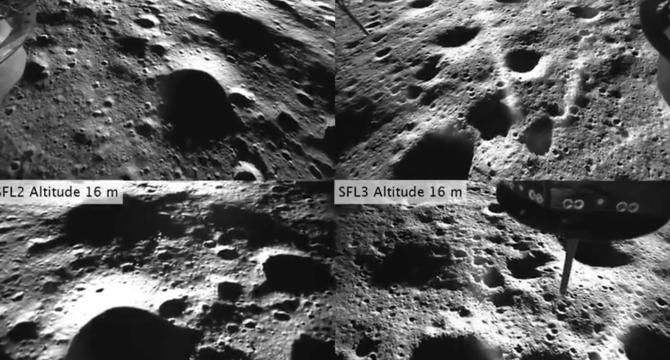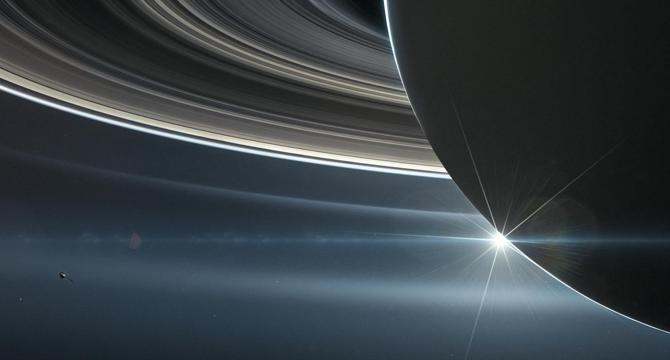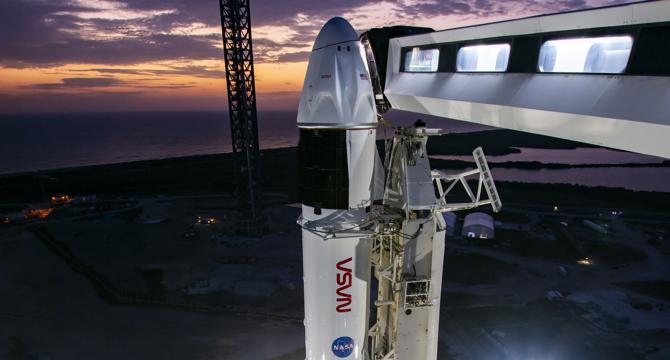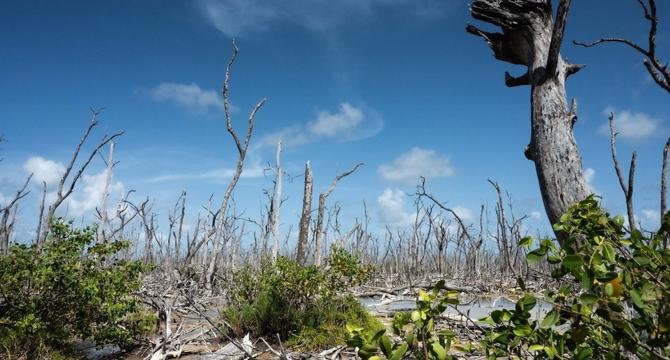Space News
Earthsky
309

Image Credit: Earthsky
Be a storm spotter and help during severe weather
- During severe weather season in the US, storm spotters play a crucial role in relaying reports to the National Weather Service to help keep people safe.
- Storm spotters are volunteers who undergo training to identify severe weather features and report them accurately.
- The National Weather Service issues numerous weather warnings yearly, but ground truth from storm spotters is invaluable for accurate assessments.
- To become a storm spotter, individuals can take free training courses offered by their local National Weather Service office.
- Reports from storm spotters are essential for identifying tornadoes, damaging winds, large hail, and flooding during severe weather events.
- Besides first responders and utility workers, ordinary citizens with a drive to serve their communities are encouraged to become trained spotters.
- Modern technology like radar and dual-pol radars aid in weather forecasting, but ground reports from storm spotters provide critical real-time data.
- Spotting non-tornadic severe storms, such as those producing damaging winds and large hail, is another important role for storm spotters.
- The National Weather Service relies on storm spotters to provide ground truth on severe weather, enhancing the accuracy of warnings and keeping the public safe.
- To stay informed during severe weather season, individuals should follow local forecasts from the National Weather Service and updates from the Storm Prediction Center.
Read Full Article
18 Likes
Earthsky
444

Image Credit: Earthsky
Look for amazing Omega Centauri, using Spica as a guide
- Spica, a bright blue-white star, can help you locate the Omega Centauri star cluster, the largest and finest globular star cluster visible to the naked eye.
- Northern Hemisphere spring evenings, when Spica and Omega Centauri are highest around midnight, are ideal for observing these celestial wonders.
- Spica, visible in the Northern Hemisphere, can be easily found using the Big Dipper asterism, leading you to this remarkable star cluster.
- With a clear and dark sky, Omega Centauri, located about 35 degrees below Spica, can be seen as a faint, possibly fuzzy star.
- Residents of the Southern Hemisphere have a more favorable view of Omega Centauri, which is higher in their skies and can be found using the Southern Cross constellation.
- The Jewel Box star cluster, found within the Southern Cross, serves as a guide to locate Omega Centauri, a globular cluster with approximately 10 million stars.
- For the best view, a telescope is recommended to observe the globe-shaped stellar city of Omega Centauri.
- Omega Centauri is most remarkable due to being visible without optics and containing some of the Milky Way's oldest stars.
- Observing Spica and Omega Centauri at their highest points in the sky allows for an optimal viewing experience of these celestial objects.
- Using Spica or the Southern Cross as guides, enthusiasts can enjoy the beauty and splendor of the Omega Centauri globular cluster, a captivating astronomical sight.
Read Full Article
26 Likes
Guardian
161
Image Credit: Guardian
Swollen eyeballs, baby-like skin, and the overview effect: how astronauts feel when they return to earth
- NASA and SpaceX are launching a mission to retrieve astronauts Barry "Butch" Wilmore and Suni Williams after a prolonged stay at the International Space Station.
- Extended periods in space lead to bone density loss, muscle wasting, blood volume reduction, changed blood flow, and fluid build-up in astronauts' heads.
- Returning astronauts may feel like they've kicked a nine-month cold, struggle to walk, experience dizziness, and have weakened vision.
- Astronauts may need glasses for life due to changes in eyeball shape and vision after space missions.
- Reconditioning after space travel is akin to intense physiotherapy; it is tiring and aims to strike a balance between strength and fatigue.
- Extended space stays expose astronauts to radiation, increasing cancer risks, with challenges in protecting against radiation during longer missions.
- Astronauts may experience 'the overview effect' - a deep sense of connection to humanity and Earth after seeing it from space, leading to mixed feelings upon return.
- Anxiety, depression, and challenges adapting to normal life on Earth are common post-space travel.
Read Full Article
9 Likes
Digitaltrends
439

Image Credit: Digitaltrends
Blue Ghost’s moon landing shown in dramatic new footage
- A new video released by NASA's Langley Research Center shows the Blue Ghost lander's powerful engine plumes interacting with the moon's surface during landing.
- The video was recorded by the lander's SCALPSS instrument, which comprises six cameras and is part of NASA's CLPS initiative.
- The footage provides useful before-and-after data and is expected to inform future missions to the moon.
- The Blue Ghost mission aims to study lunar regolith, test new technologies, and inspire future generations of scientists and engineers.
Read Full Article
26 Likes
Discover more
The Robot Report
112

National Robotics Programme launches RoboNexus to help Singapore startups
- The National Robotics Programme in Singapore has launched RoboNexus, an accelerator program to support robotics startups and SMEs.
- RoboNexus aims to provide mentorship, business development support, and access to global markets for local startups.
- Singapore ranks second globally in robot density, with 770 robots per 10,000 workers.
- The NRP focuses on funding user-driven research and development to grow Singapore's robotics talent pool.
- RoboNexus participants include companies like LionsBot, KABAM Robotics, dConstruct Robotics, Spinoff Robotics, XSQUARE Technologies, and Globotix.
- The accelerator program has facilitated collaborations, product development acceleration, and global market insights for robotics companies.
- RoboNexus has played a crucial role in driving expansion and strategic partnerships for startups like dConstruct Robotics.
- The launch of RoboNexus welcomes registrations from Singapore-based robotics companies and those seeking to establish operations in Singapore.
- RoboSG! 2025 showcased over 75 robots across eight thematic zones, emphasizing industry engagement and inspiring future robotics talent.
- The event hosted by Punggol Digital District featured live robot demonstrations for security, facility management, delivery, healthcare, and wellness.
Read Full Article
6 Likes
Knowridge
300

Image Credit: Knowridge
Black holes spew out powerful jets that span millions of light-years – we’re trying to understand their whole life cycle
- Supermassive black holes in galaxies can awaken and spew out powerful jets of material at near-light speeds.
- These jets, known as fountains, emit radio signals and can reach enormous distances, spanning millions of light-years.
- A recent study used supercomputers to simulate the behavior of giant cosmic jets, providing insights into their evolution over hundreds of millions of years.
- Understanding the mechanisms behind these jets not only contributes to the knowledge of radio galaxies but also helps unravel the broader processes shaping the universe.
Read Full Article
18 Likes
Metro
211

Image Credit: Metro
Supernovas may have caused mass extinctions that killed 85% of life on Earth
- Supernova explosions may have caused mass extinctions, wiping out up to 85% of animals on Earth, according to a new study.
- Supernovas are the most energetic explosions in the universe and if one were to occur close to Earth, it would be devastating for life.
- A research team conducted a census of supernovas within the Milky Way and found a correlation between the rate of massive star formation and mass extinction events on Earth.
- Supernova explosions can strip the Earth's atmosphere of ozone, exposing the planet to fatal levels of ultraviolet radiation and causing long-lasting damage.
Read Full Article
12 Likes
Brighter Side of News
220

Image Credit: Brighter Side of News
Mars Rover Discovers Traces of Ancient Martian Beaches
- Groundbreaking research based on radar scans from China’s Zhurong rover has uncovered compelling evidence of ancient Martian beaches beneath the surface of Utopia Planitia.
- The discovery strengthens the case for a past Martian ocean and hints at conditions conducive to life, indicating Mars may have once hosted Earth-like coastlines.
- The Zhurong rover, equipped with the Rover Penetrating Radar (RoPeR), detected rock formations in patterns resembling coastal environments on Earth.
- Layers of sediment bearing no signs of river or wind erosion suggest the presence of ancient shorelines shaped by waves and tides on Mars.
- The radar data compared with Earth's coastal deposits revealed similarities, indicating a dynamic interaction between land and water on Mars.
- This finding suggests Mars had a long-standing ocean during the Late Hesperian period, supporting the idea of a wetter Martian past transitioning to its current arid state.
- The discovery of ancient shorelines on Mars provides new insights into the planet's geological evolution, revealing sustained coastal processes over time.
- The Martian ocean covering a significant portion of the northern hemisphere could have supported liquid water and potentially life-friendly conditions for millions of years.
- The presence of wave activity in the ancient Martian ocean raises possibilities for the search for signs of past life in these coastal environments.
- Future missions, such as Mars Sample Return, may further investigate these areas, potentially uncovering organic molecules or microbial fossils that could indicate past life on Mars.
Read Full Article
13 Likes
Livescience
179

Image Credit: Livescience
128 new moons discovered orbiting Saturn, nearly doubling the ringed planet's total
- Astronomers have discovered 128 never-before-seen moons orbiting Saturn, nearly doubling the planet's total.
- Saturn now has a total of 274 known natural satellites, making it the 'moon king' of the solar system.
- The newly discovered moons are small in size and considered irregular, likely formed from larger moons that collided with other moons or passing comets.
- The discovery was made using the Canada France Hawaii Telescope, and the researchers believe Jupiter will never catch up in terms of moon count.
Read Full Article
10 Likes
Nasa
242

Image Credit: Nasa
Navigating a Slanted River
- NASA's Mars Perseverance rover captured an image of the 'Slants River' target using its SHERLOC WATSON camera, despite the target fracturing after being abraded.
- The rover's instrumentation includes cameras, spectrometers, and a laser for searching for organics and minerals altered by water.
- Perseverance's Science Team explored the Broom Point workspace to collect the Main River sample, studying distinct layers for geological insights.
- The rock at Broom Point fractured during abrasion, posing challenges for instruments like SHERLOC and PIXL in conducting scans.
- Engineers used WATSON, SHERLOC's companion camera, to assess the topography and successfully conducted proximity science on the broken surface.
- After completing the abrasion proximity science, Perseverance drilled and sealed the Main River core without issues, moving on to the next workspace.
- The Science Team aims to analyze the composition and emplacement of materials encountered, furthering scientific exploration on Mars.
- Perseverance's efforts showcase determination in overcoming obstacles and gathering valuable data for future analyses.
- The rover's continuous exploration exemplifies the commitment to unraveling Mars' geological history and potential signs of past microbial life.
- Overall, the mission progresses with Perseverance navigating challenging terrains on Mars, paving the way for significant scientific discoveries.
Read Full Article
14 Likes
Nasa
161

Image Credit: Nasa
Station Crew Keeps Up Advanced Space Research, Waits for Crew-10 Mission
- The SpaceX Crew-10 mission to the International Space Station (ISS) is delayed due to a ground issue at the launchpad.
- Meanwhile, the ISS crew continues to conduct microgravity research in areas such as robotics, combustion, and adaptation to weightlessness.
- The Falcon 9 rocket hydraulic system issue is being investigated, and Crew-10 is now targeted to launch on Friday.
- During this time, the ISS crew carried out various scientific experiments, including testing a robotic free-flyer and studying combustion and flammability in space.
Read Full Article
9 Likes
Digitaltrends
76

Image Credit: Digitaltrends
James Webb captures a stunning view of the dreamy Flame Nebula
- The James Webb Space Telescope captures a stunning view of the Flame Nebula, revealing a new perspective on this emission nebula in the Orion constellation.
- Researchers focused on studying brown dwarfs within the Flame Nebula to understand the boundary between stars and brown dwarfs.
- The study aimed to determine the mass limit required for an object to start fusion and become a star.
- Three low-mass objects, colder than protostars, were highlighted in the Webb image, showcasing the sensitivity of Webb's instruments.
- Stars and brown dwarfs form from molecular clouds, and the heat they radiate influences whether they become stars or brown dwarfs.
- The transition from star to brown dwarf may occur at around two to three times the mass of Jupiter.
- Data from Hubble and Webb complement each other in studying brown dwarfs, with Webb providing new insights.
- The research signifies a significant advancement in understanding low-mass objects in star-forming regions.
- The findings are published in The Astrophysical Journal Letters, showcasing Webb's contribution to astronomical research.
- The collaboration between Hubble and Webb presents extensive possibilities for exploring and comprehending celestial objects.
Read Full Article
4 Likes
Nasa
336

Image Credit: Nasa
NASA Researchers Study Coastal Wetlands, Champions of Carbon Capture
- NASA researchers are studying coastal wetlands to understand their impact on atmospheric levels of carbon dioxide (CO2) and methane, as part of the BlueFlux Campaign.
- Coastal wetlands, despite covering less than 2% of the planet's land, remove a significant amount of carbon dioxide from the atmosphere, with Florida's coastal wetlands alone estimated to remove 31.8 million metric tons annually.
- The research aims to develop models to estimate and monitor greenhouse gas concentrations globally by studying how wetland vegetation responds to environmental factors like rising temperatures and sea levels.
- Blue carbon, stored in oceans and wetlands, offers opportunities for climate mitigation but requires conservation efforts supported by science to prevent carbon loss.
- Methane, produced in wetland soils, is a potent greenhouse gas released as wetland conditions change, impacting the gas exchange between vegetation and the atmosphere.
- Understanding the relationship between wetland health and gaseous flux, including methane production, is crucial for monitoring the impact of ecological changes on global carbon dioxide and methane levels.
- Despite Florida's wetlands acting as a net climate benefit currently, ongoing climate disturbances could alter their role in greenhouse gas flux.
- Historic rates of blue carbon development in mangrove forests are being identified using core samples, aiding in evaluating carbon storage responses to environmental pressures.
- NASA's BlueFlux campaign contributes to understanding wetland ecology changes and restoration efforts in South Florida to protect vital natural resources and support the local ecosystem.
- The future of South Florida's wetlands, crucial for carbon storage, water supply, and unique biodiversity, relies on sound science and management to ensure coexistence with human activities.
Read Full Article
20 Likes
For uninterrupted reading, download the app